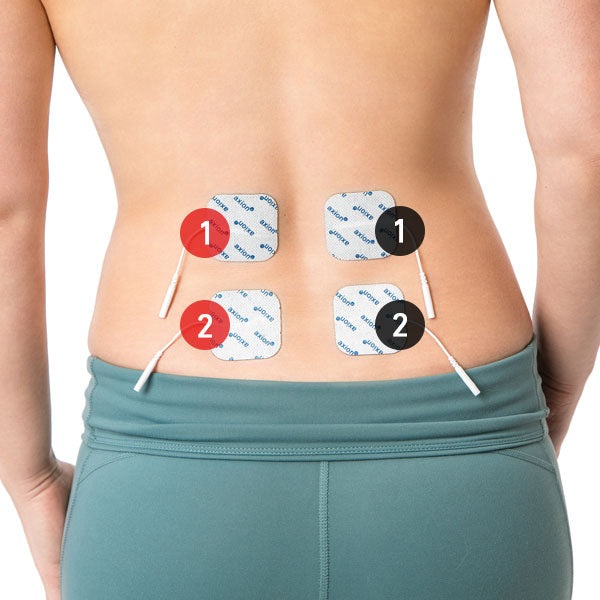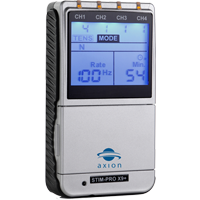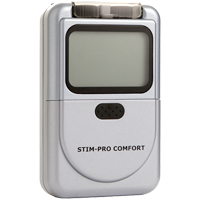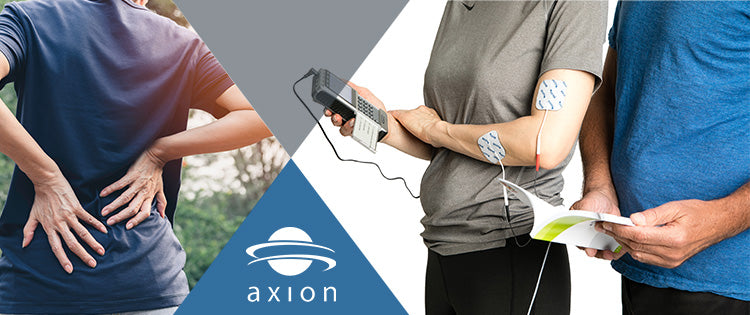TENS application for pain in the lumbar spine

Pain in the lumbar spine is annoying. If you also radiate into the area of the cervical spine, the neck or the hips, every movement hurts. To relieve pain in the lumbar spine or lower back, you can use a TENS machine.
A TENS application can bring about a speedy improvement, especially in all tension-related pain conditions.[1] It promotes blood circulation and thus the supply of oxygen and nutrients to the treatment environment.[2] This can result in rapid pain relief. Even a prophylactic TENS application can prevent tension.
In the event of pain, the electronic impulses from a TENS device block the pain stimuli from being transmitted to the brain via the nerves. Blocking the transmission of pain stimuli usually results in rapid pain relief. Another parameter setting promotes the release of endogenous hormones, the endorphins. These achieve a pain-relieving effect.[3]
Electrodes that adhere well and have a low resistance are important for TENS treatments on the back. Especially along the spine. Then the electrical stimuli can be passed on evenly over the entire length of the back. This also addresses the back extensor muscle (musculus erector spinae).


-

This guide is for orientation purposes and does not replace the supervision of a doctor or therapist. Please follow the warnings and safety instructions of your device. Changes and errors are possible.
-

Number inside the circle: Channel number
Circle color: Red = Electrode 1, Black = Electrode 2
The recommended programs for axion TENS units
-

-

STIM-PRO T400
P07
-

Please note when using TENS:
The intensity should be adjusted so that it is felt as a pleasant tingling sensation. The duration of the application should be approx. 40 minutes in order to be able to achieve a lasting reduction in pain. It also makes sense to switch programs every now and then.
What causes pain in the lumbar spine?

Video tutorial for TENS application for pain in the lumbar spine
The advantages of pain treatment with TENS
-

From everywhere
You can use TENS therapy anywhere. It doesn't matter whether you're sitting comfortably on the sofa or in the office.
-

Drug free
TENS pain therapy is an alternative to drug pain treatment
-

At any time
You can use TENS flexibly and at any time. Success can already be achieved after the first treatment
-

Free of side effects
When used correctly, pain treatment with TENS has practically no side effects
Studies and scientific sources






